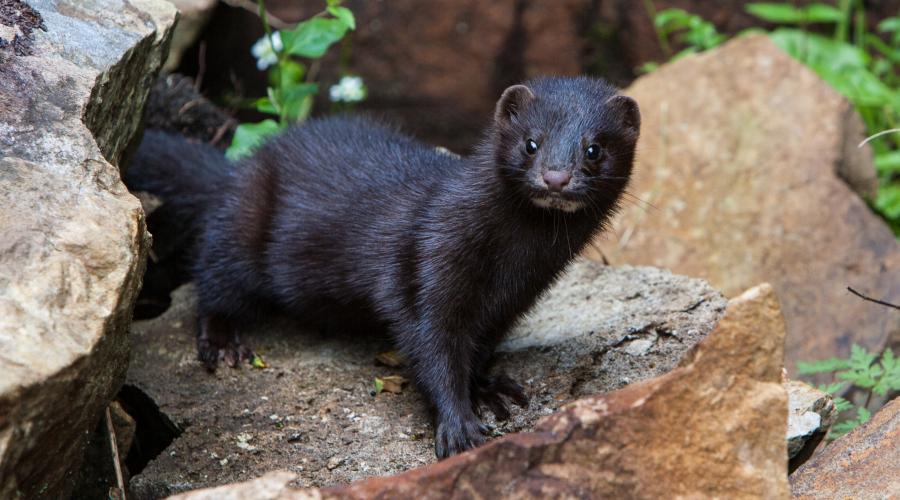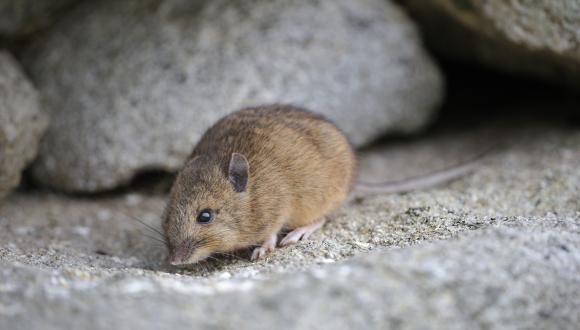
American mink
This semi-aquatic carnivore first became established in the wild in Britain in the 1930s, when animals escaped from fur farms.
The American mink (Neovison vison) spread through most of the UK during the second half of the 20th century. Mink were the principal cause of the crash in the British water vole population at this time.
A proficient hunter, the mink eats:
- birds and their eggs
- small mammals
- fish
- amphibians
- shellfish
- crustaceans
Some bird species are more at risk from mink predation such as colony ground-nesting birds, like terns.
After mating in the spring, females give birth to litters of between three and seven ‘kits’ in May. Kits are independent and start to disperse from mid-August. Mink can live for up to five years, but 50% of kits die in their first year.
Problems caused by mink
As an introduced predator, mink have had an adverse impact on the native biodiversity of the Western Isles and in other parts of Scotland. Their continued presence poses a particular threat to the many internationally important resident and migrant populations of ground-nesting birds. The Hebridean Mink Project aims to eradicate mink from the Western Isles to protect these populations whilst the Scottish Invasive Species Initiative is undertaking mink control across a large part of the north of Scotland.
Mink predation on eggs and chicks at seabird colonies on the west coast and the Western Isles has resulted in widespread breeding failures and a decline in breeding bird numbers. Mink may also account for a large proportion of salmonid mortality in some river systems.
Mink also affect economic activities such as:
• fish farming
• crofting
• sports angling
• game shooting
• tourism
Report a sighting
You should immediately report any mink sightings in the Western Isles to the Hebridean Mink Project.
Iain MacLeod, Hebridean Mink Project Officer
Telephone: 01851 705258
Email: [email protected]
In the north of Scotland (Tayside, Angus, Aberdeenshire, Speyside, Moray and Highland) mink control is coordinated by the Scottish Invasive Species Initiative partnership. You can report a mink sighting in this area to a project partner, by email ([email protected]) or through the SISi project website.
Find out more
Species Action Framework Handbook - American Mink






